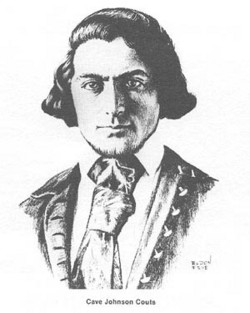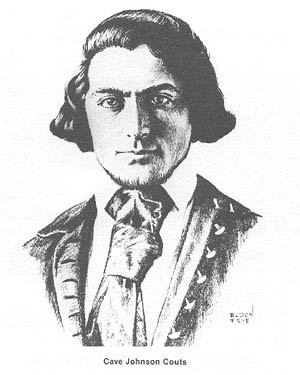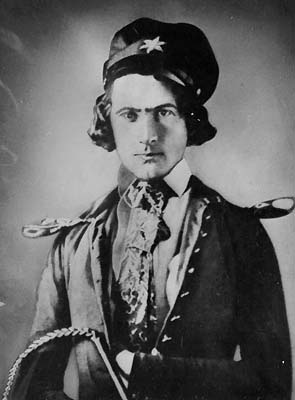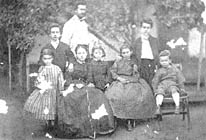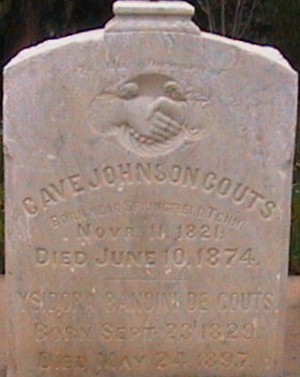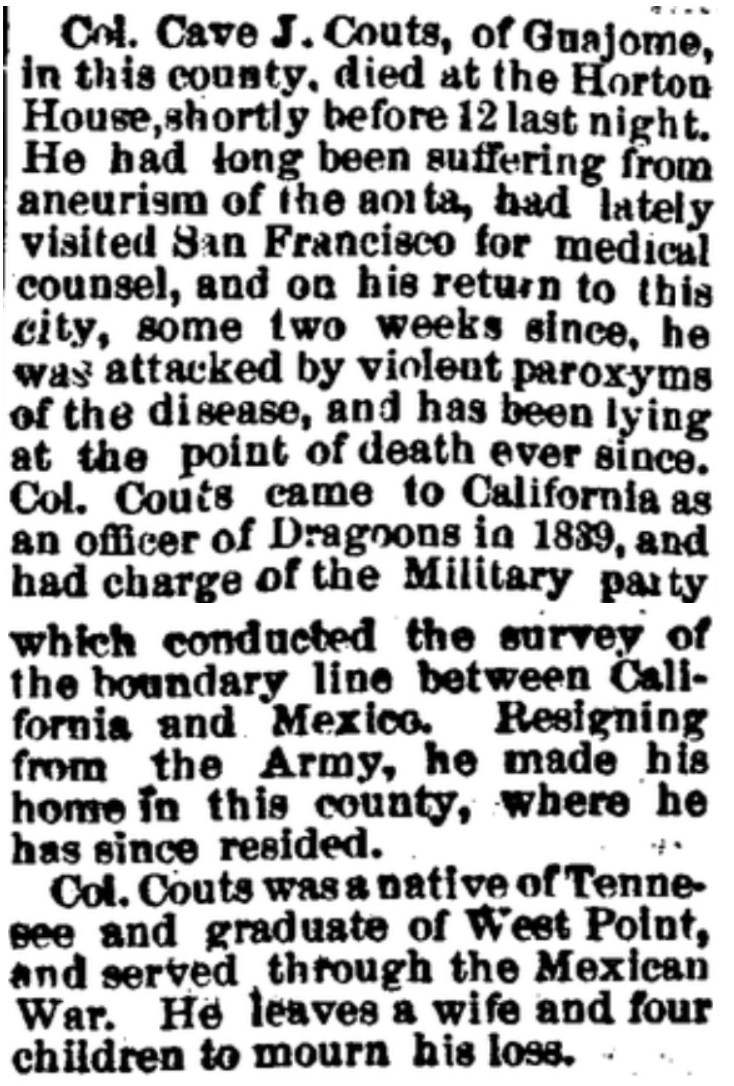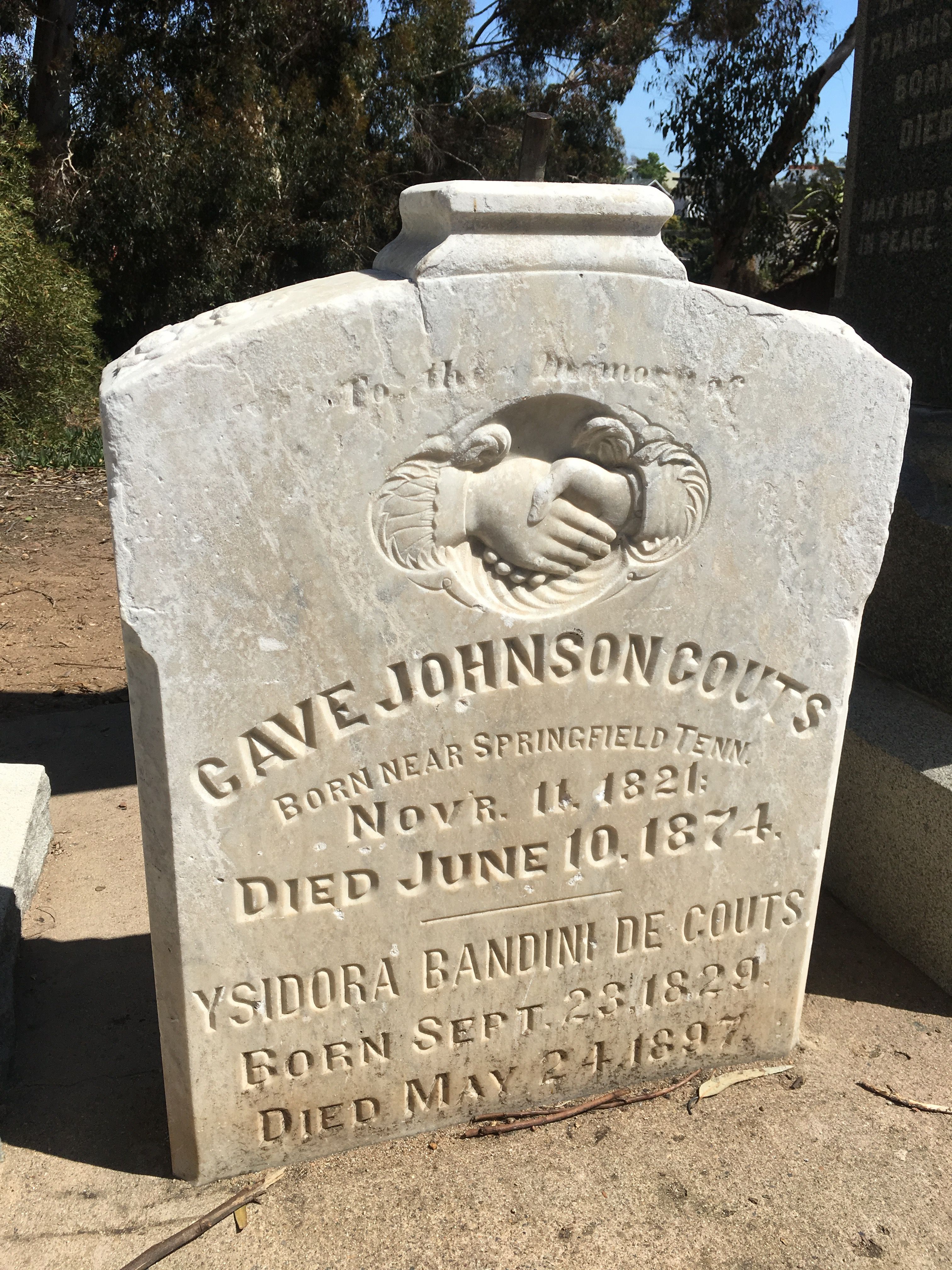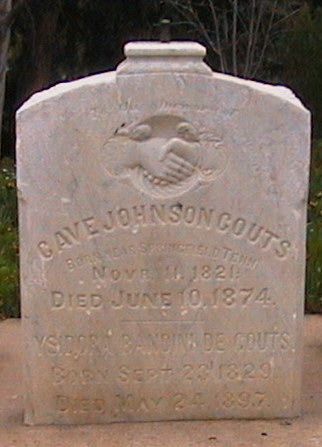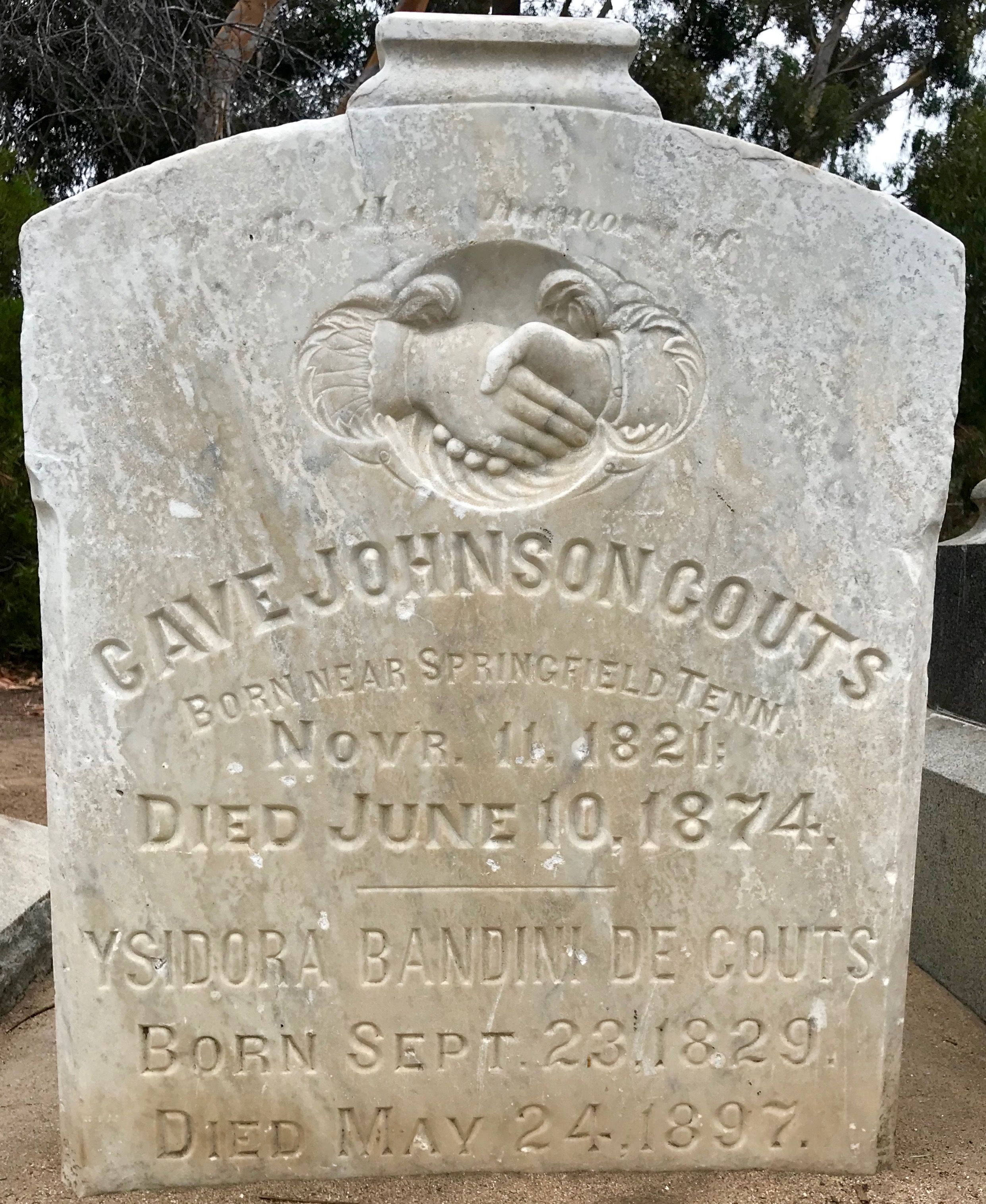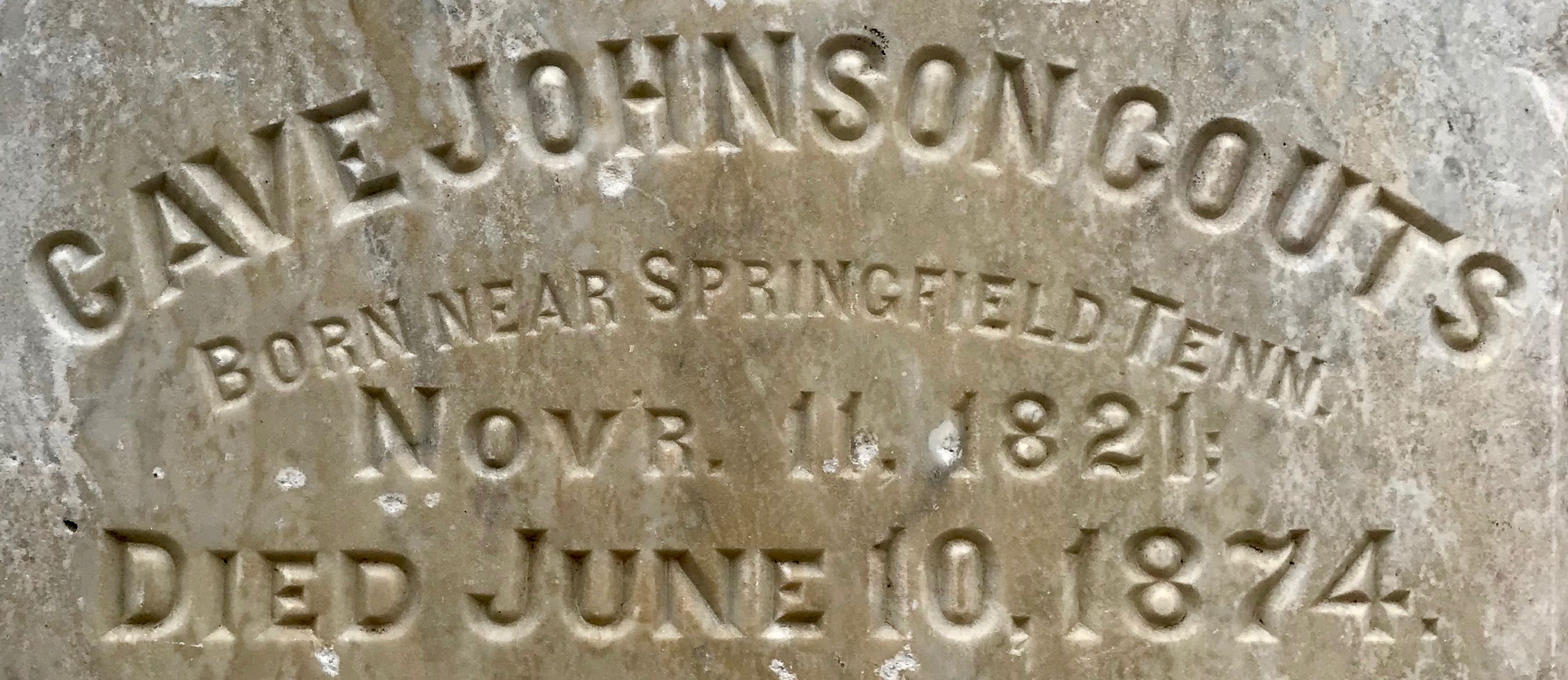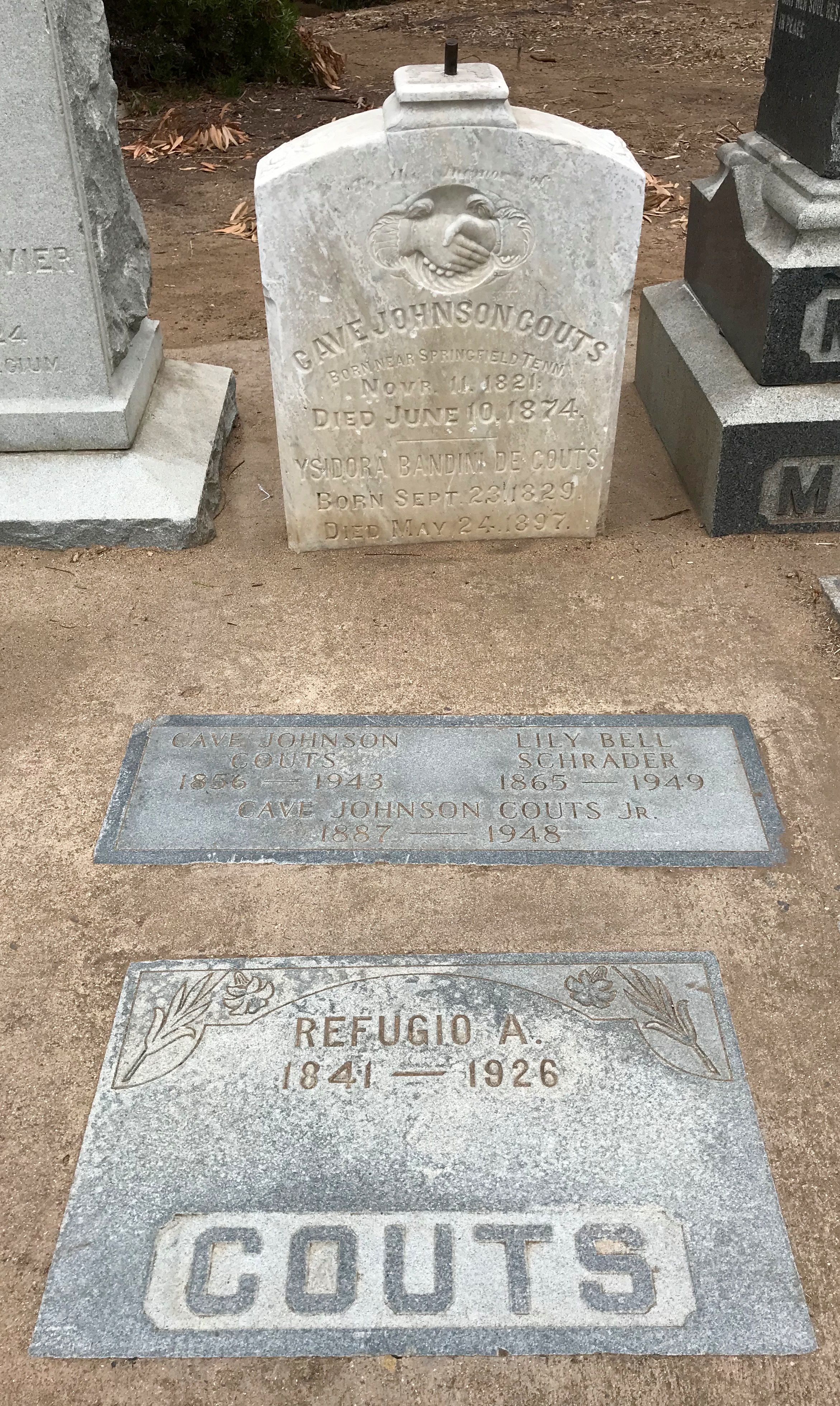In 1839 Uncle Cave was successful in getting his nephew and namesake appointed to the United States Military Academy at West Point. Cave graduated in 1843 in the same class as Ulysses S. Grant.
After graduation, Lt. Couts served in the 1st U.S. Dragoons on the frontier until after the Mexican War. From 1848 to 1851 He was stationed in Los Angeles, San Luis Rey,
and San Diego. His main job in the area was to complete the survey of the boundary between Mexico and California. During this time he also led the Whipple expedition to the Colorado River and was elected San Diego representative to the California constitutional convention.
While in San Diego, Cave met and married Ysidora Bandini, beautiful daughter of the wealthy and powerful Don Juan Bandini, in whose home Cave frequently stayed. As a wedding gift, Ysidora's brother-in-law presented the couple with Guajome, a large rancho about 30 miles north of San Diego. On October 9 of that year (1851), Cave resigned his commission in the United States Army and gave up the wayfaring life of a military man. The new rancho owner was aware of the substantial profits that could be made from selling cattle in northern California markets. Soon, he initiated construction of a large adobe residence at Guajome.
Although frequently supervising activities at the rancho, he and Ysidora lived temporarily with the Bandini family in San Diego, where Cave found time to participate in local affairs. He surveyed and mapped Old Town—giving the streets their present historic names. He was commissioned a lieutenant colonel in the California militia and aide- de-camp to Gov. Bigler. Nevertheless, his primary ambition lay with Guajome to the north. Development of Rancho Guajome had become the driving force in his life. In 1853 the home was completed and the Couts family moved permanently to the Rancho. Managing his business affairs with skill and military precision, Cave became one of the wealthiest men in Southern California. He also purchased the San Marcos,Buena Vista, and La Jolla ranchos, and also government land, amounting in all to about 20,000 acres.
Cave and Ysidora had ten children before his death in 1874. In the 1970s San Diego County acquired Guajome and determined to save it as an architectural and historical treasure. Of the beautiful and historic old ranchos in the region, only Guajome has been saved. Today, the grounds are a county park and the home of Cave and Ysidora is on the National Register of Historic Places. The gardens near the chapel Cave built for Ysidora are a favorite site for weddings.
http://www.sdcounty.ca.gov/parks/
ranchoguajomeadobe.html
Meticulous in documenting his personal, military and business life, Cave Johnson Couts left a large collection of personal papers (16,000 pieces) which are permanently housed in the Manuscripts department of the Huntington Library in San Mateo. Cave's detailed journals and other papers provide pictures of life in southern California during the mid-nineteenth century that is found in few other places.
Note on the Calvary Cemetery:
In the 1970s the cemetery was converted into the Mission Hills Memorial Park, and only 150 of the original 2016 gravestones were salvaged. These gravestones were placed near the stone wall closest to the Middle School. The grave stone marker for Cave Johnson Couts was salvaged, and is near the left end of the row of markers. All records relating to the exact locations of the graves in the park were reported to have been lost in a fire.
Sincere thanks to Eric Powell for sponsoring this memorial.
In 1839 Uncle Cave was successful in getting his nephew and namesake appointed to the United States Military Academy at West Point. Cave graduated in 1843 in the same class as Ulysses S. Grant.
After graduation, Lt. Couts served in the 1st U.S. Dragoons on the frontier until after the Mexican War. From 1848 to 1851 He was stationed in Los Angeles, San Luis Rey,
and San Diego. His main job in the area was to complete the survey of the boundary between Mexico and California. During this time he also led the Whipple expedition to the Colorado River and was elected San Diego representative to the California constitutional convention.
While in San Diego, Cave met and married Ysidora Bandini, beautiful daughter of the wealthy and powerful Don Juan Bandini, in whose home Cave frequently stayed. As a wedding gift, Ysidora's brother-in-law presented the couple with Guajome, a large rancho about 30 miles north of San Diego. On October 9 of that year (1851), Cave resigned his commission in the United States Army and gave up the wayfaring life of a military man. The new rancho owner was aware of the substantial profits that could be made from selling cattle in northern California markets. Soon, he initiated construction of a large adobe residence at Guajome.
Although frequently supervising activities at the rancho, he and Ysidora lived temporarily with the Bandini family in San Diego, where Cave found time to participate in local affairs. He surveyed and mapped Old Town—giving the streets their present historic names. He was commissioned a lieutenant colonel in the California militia and aide- de-camp to Gov. Bigler. Nevertheless, his primary ambition lay with Guajome to the north. Development of Rancho Guajome had become the driving force in his life. In 1853 the home was completed and the Couts family moved permanently to the Rancho. Managing his business affairs with skill and military precision, Cave became one of the wealthiest men in Southern California. He also purchased the San Marcos,Buena Vista, and La Jolla ranchos, and also government land, amounting in all to about 20,000 acres.
Cave and Ysidora had ten children before his death in 1874. In the 1970s San Diego County acquired Guajome and determined to save it as an architectural and historical treasure. Of the beautiful and historic old ranchos in the region, only Guajome has been saved. Today, the grounds are a county park and the home of Cave and Ysidora is on the National Register of Historic Places. The gardens near the chapel Cave built for Ysidora are a favorite site for weddings.
http://www.sdcounty.ca.gov/parks/
ranchoguajomeadobe.html
Meticulous in documenting his personal, military and business life, Cave Johnson Couts left a large collection of personal papers (16,000 pieces) which are permanently housed in the Manuscripts department of the Huntington Library in San Mateo. Cave's detailed journals and other papers provide pictures of life in southern California during the mid-nineteenth century that is found in few other places.
Note on the Calvary Cemetery:
In the 1970s the cemetery was converted into the Mission Hills Memorial Park, and only 150 of the original 2016 gravestones were salvaged. These gravestones were placed near the stone wall closest to the Middle School. The grave stone marker for Cave Johnson Couts was salvaged, and is near the left end of the row of markers. All records relating to the exact locations of the graves in the park were reported to have been lost in a fire.
Sincere thanks to Eric Powell for sponsoring this memorial.
